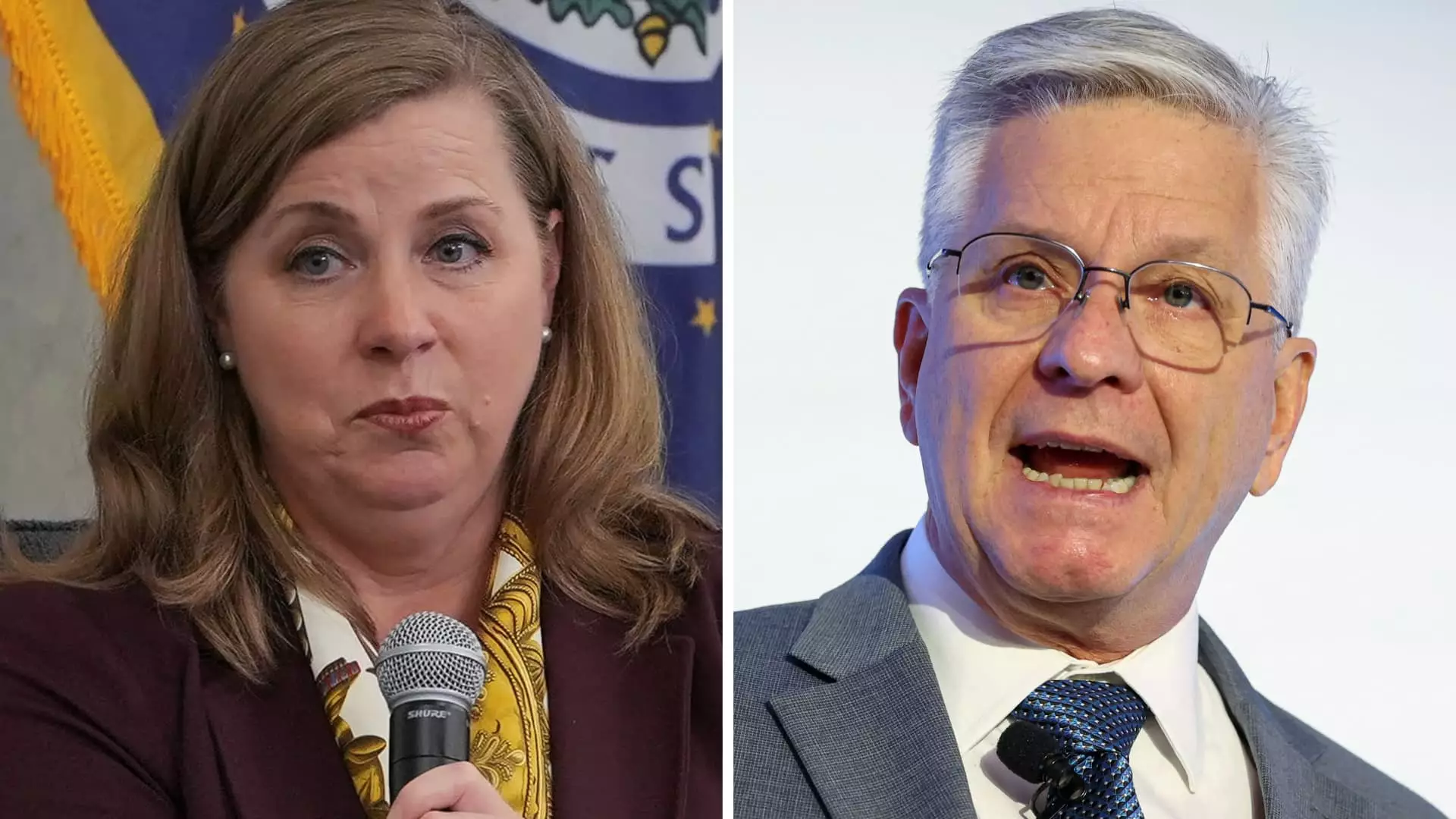In recent weeks, the Federal Reserve’s decision to maintain its current interest rate has sparked intense debate among policymakers and critics alike. While some see stability as a virtue, the cautious stance adopted by the majority of the Federal Open Market Committee (FOMC) reflects a troubling hesitancy that could jeopardize our economic trajectory. Specifically, two influential Federal Reserve governors—Christopher Waller and Michelle Bowman—voiced dissenting opinions, advocating for modest rate cuts amidst mounting signs of a fragile labor market and uneven inflation pressures. Their stance reveals an acknowledgment: delaying necessary monetary easing might exacerbate existing vulnerabilities rather than mitigate them. This situation underscores the peril of complacency in the face of economic signals that demand swift, deliberate action to sustain growth and protect workers.
Perils of Complacency: The Risks of Doing Nothing
The core concern raised by Waller and Bowman revolves around the “wait-and-see” approach, which appears increasingly misaligned with economic realities. By holding the federal funds rate steady since December, the Fed risks falling behind the curve—an ominous prospect that could fester into job losses, inflationary surprises, or prolonged economic stagnation. Both officials argue that tariffs, invoked under the Trump administration, are having only a temporary impact on inflation, and therefore, a gradual easing could help preempt broader economic harm. Their call for a measured decline—up to 1.5 percentage points—reflects a pragmatic attempt to steer clear of overly aggressive cuts that might destabilize markets or unearth inflationary pressures down the line.
This cautious stance, however, contrasts sharply with political pressures driven by former President Donald Trump, who has vocally demanded aggressive rate reductions of up to three percentage points. Trump’s unrelenting criticism underscores a broader political narrative: that monetary policy should serve short-term political interests rather than prioritize long-term economic health. The fact that only two Governors have dissented since 1993 illustrates the rarity of such disagreement, which highlights the seriousness of the current risks. In this light, the Fed’s hesitance borders on imprudent, risking a monetary policy that lags behind economic needs, especially when the labor market and inflation signals are flashing warning signs.
The True Cost of Inaction: Eroding Trust and Economic Stability
The implications of delaying rate cuts extend beyond immediate market reactions; they threaten to undermine confidence in the central bank’s ability to manage the economy effectively. The Fed’s stability rests partly on its credibility—when markets perceive hesitation or indecision, volatility often follows. The ongoing debate reflects a fundamental question: Can the Fed discern enough about the evolving economic landscape to act decisively, or will hesitancy enable a slide into recession or stagflation?
Moreover, the political influence—especially from figures like Trump—exacerbates the challenge, pushing the Fed into a reactive stance that may prioritize short-term political gains over sound economic governance. The danger lies in an echo chamber where political rhetoric encourages the pursuit of rapid, aggressive rate cuts that could do more harm than good. Such external pressures risk distorting a central bank that should be above political influence, dedicated to maintaining balanced, evidence-based policies that foster sustainable growth and job security.
The dissenters’ advocacy for gradual, thoughtful easing exemplifies a center-ground liberal approach—recognizing the importance of flexibility, but insisting on responsible action. They understand that inflation, while temporarily elevated, is unlikely to spiral out of control if policymakers exercise patience. Their perspective urges the Fed to maintain a steady course that supports recovery without igniting new inflationary issues or destabilizing the labor market.
In essence, the current conundrum showcases the tension between political expediency and responsible economic stewardship. The threat of inaction isn’t merely theoretical—it embodies the risk of leaving the economy adrift in uncertain waters, vulnerable to shocks that could have been mitigated through timely, judicious policy adjustments. This moment demands courage and clarity from the Fed, qualities that seem increasingly scarce in a political environment obsessed with immediate victories over long-term stability.

